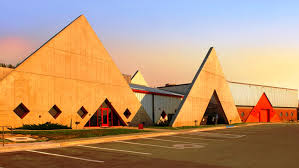The IAC’s mission is to maintain and improve a unique affordable facility for research and development that requires low to medium energy particle accelerators and associated technology. We research accelerator applications, construct accelerators, train students, and make our facility available for outside users.
History
The Idaho Accelerator Center (IAC) is the result of the Nuclear Science Application Project (NSAP), a successful effort begun by Idaho State University (ISU) in the late 1980's to develop strength in nuclear-based applied research. NSAP began in 1988 when the ISU Physics Department established the Particle Beam Laboratory. This operation expanded with the addition of physics faculty and equipment and with the addition of the Small Accelerator Facility in 1992. The organization became a State approved research center, the IAC, in 1994. Among the original projects was construction of a State funded building designed to provide office and laboratory space to house the former DOE "Santa Barbara LINAC", a famous accelerator that had been used by Los Alamos, Sandia and other national laboratories to support nuclear weapons testing. The Idaho Accelerator Center Building was completed in October 1998 and dedicated on April 30, 1999. By 2000, the IAC had about 20,000 sq. ft. of laboratory space. The latest additions to the IAC were completed in 2011 and include our radiochemistry laboratory and isotope accelerator hall. The complex now has some 40,000 sq. ft. of laboratory and office space. During the founding period and to the present the IAC and the DOE cooperate on a wide range of joint activities including the placement of DOE owned equipment at ISU. We make equipment available to external researchers on a user fee basis. Our facility centralizes equipment in a convenient location fostering inexpensive research and development and rapid testing for integrated demonstration development and transfer of technology. The IAC is self-funded through research grants, contracts, and user charges.


